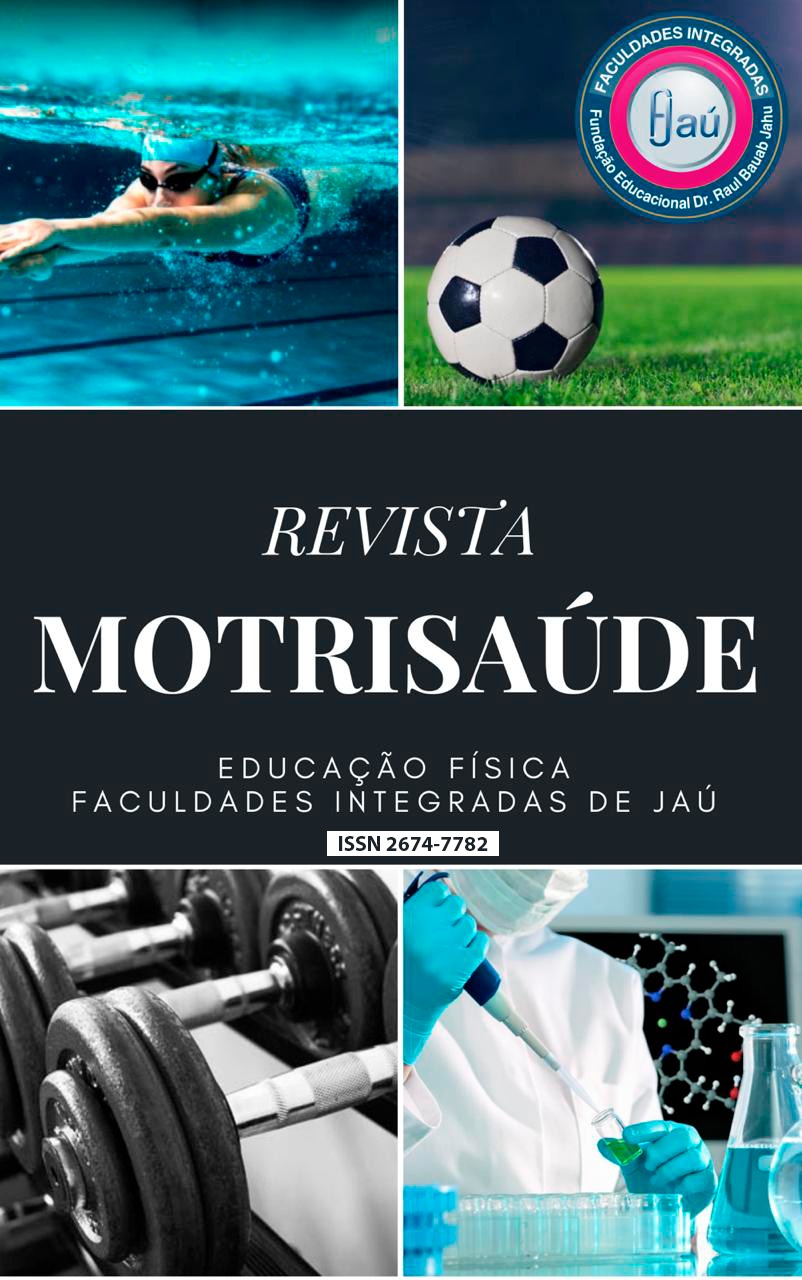O papel do profissional de educação física no processo de reabilitação de ligamento cruzado anterior (LCA) em atletas e praticantes de esporte recreacional
##plugins.themes.bootstrap3.article.main##
Resumo
Introdução: O LCA é uma estrutura ligamentar do joelho que ao longo da vida pode sofrer um rompimento parcial ou total. Devido a isto, o profissional de educação física e os demais profissionais capacitados para este fim, realizam procedimentos de avaliação dos casos e aplicam metodologias de reabilitação em seus pacientes. Objetivo: Apresentar os métodos utilizados para reabilitação do ligamento cruzado anterior na intervenção da educação física, utilizando exercícios de força em indivíduos logo após a liberação do tratamento do fisioterapeuta. Materiais e Métodos: Para a realização deste trabalho, foi adotado o método de revisão bibliográfica, no qual consiste em reunir informações existentes na literatura produzida por diversos autores e discuti-las. Resultados: Quais exercícios utilizar e quando utilizar, ferramentas avaliativas, programas de treinamento para reabilitação de atletas e praticantes de atividade esportiva recreacional. Conclusão: O principal fator para a reabilitação de LCA é a simetria biomecânica e funcional da articulação e dos músculos extensores dos joelhos. Também deve se atentar às demais musculaturas que auxiliam no movimento do mesmo. Os exercícios mais utilizados são; alongamentos (aumento de amplitude), propriocepção (equilíbrio/estabilidade) e musculação (força).
##plugins.themes.bootstrap3.article.details##
Referências
2. Beynnon BD, Johnson RJ, Fleming BC, Stankewich CJ, Renström PA, Nichols CE. The strain behavior of the anterior cruciate ligament during squatting and active flexion-extension. A comparison of an open and a closed kinetic chain exercise. Am J Sports Med. 1997 Nov-Dec;25(6):823-9. doi: 10.1177/036354659702500616. PMID: 9397272.
3. Buckthorpe M, La Rosa G, Villa FD. Restoring knee extensor strenght after anterior cruciate ligament reconstruction: a clinical commentary. Int J Sports Phys Ther. 2019;14(1):159–172.
4. Campos GC, Nunes LFB, Arruda LRP, Teixeira PEP, Amaral GHA, Alves Jr WM. Current panorama of the anterior cruciate ligament reconstruction surgery in Brazil. Acta Ortop Bras. [online]. 2019;27(3):146-51. Available from URL: http://www.scielo.br/aob.
5. Carlo MS, Shelbourne KD, Mccarrol JR, Retting AC. Traditional versus ccelerated Rehabilitation following ACL reconstruction: A one year follow-up. J Orthop Sports Phys Ther. 1992; 15(6):309- 16.
6. Dangelo, J. G.; Fattini, C. A. Anatomia humana básica. São Paulo: Atheneu, 2000.
7. DePhillipo, N. N., Kennedy, M. I., Aman, Z. S., Bernhardson, A. S., O’Brien, L., & LaPrade, R. F. (2018). Blood Flow Restriction Therapy After Knee Surgery: Indications, Safety Considerations, and Postoperative Protocol. Arthroscopy Techniques. doi:10.1016/j.eats.2018.06.010
8. Giles, L., Webster, K., McClelland, J., & Cook, J. (2017). Quadriceps strengthening with and without blood-flow restriction in the treatment of patellofemoral pain – A double blind randomised trial. Journal of Science and Medicine in Sport, 20, e100. doi:10.1016/j.jsams.2017.01.081
9. Hewett, T. E., Di Stasi, S. L., & Myer, G. D. (2012). Current Concepts for Injury Prevention in Athletes After Anterior Cruciate Ligament Reconstruction. The American Journal of Sports Medicine, 41(1), 216–224. doi:10.1177/0363546512459638
10. Kim SJ, Kim HK. Reliability of the anterior drawer test, the pivot shift test, and the Lachman test. Clin Orthop Relat Res. 1995 Aug;(317):237-42. PMID: 7671485.
11. Palmieri-Smith RM, Lepley LK. Quadriceps Strength Asymmetry After Anterior Cruciate Ligament Reconstruction Alters Knee Joint Biomechanics and Functional Performance at Time of Return to Activity. Am J Sports Med. 2015 Jul;43(7):1662-9. doi: 10.1177/0363546515578252. Epub 2015 Apr 16. PMID: 25883169; PMCID: PMC4758854.
12. Pua YH, Ho JY, Chan SA, Khoo SJ, Chong HC. Associations of isokinetic and isotonic knee strength with knee function and activity level after anterior cruciate ligament reconstruction: a prospective cohort study. Knee. 2017;24(5):1067‐1074. doi:10.1016/j.knee.2017.06.014
13. Salem GJ, Salinas R, Harding FV. Bilateral kinematic and kinetic analysis of the squat exercise after anterior cruciate ligament reconstruction. Arch Phys Med Rehabil. 2003;84:1211–6.
14. Samuel Barnett , Martha M. Murray , Updates on Anterior Cruciate Ligament Repair Techniques, Operative Techniques in Sports Medicine (2020), doi: https://doi.org/10.1016/j.otsm.2020.150756
15. Stark J. Two Cases of Rupture of the Crucial Ligament of the Knee-Joint. Edinb Med Surg J. 1850 Oct 1;74(185):267-271. PMID: 30331064; PMCID: PMC5800619.
16. Sumide, T., Sakuraba, K., Sawaki, K., Ohmura, H., & Tamura, Y. (2009). Effect of resistance exercise training combined with relatively low vascular occlusion. Journal of Science and Medicine in Sport, 12(1), 107–112. doi:10.1016/j.jsams.2007.09.009
17. Tagesson S, Oberg B, Good L, Kvist J. A comprehensive rehabilitation program with quadriceps strengthening in closed versus open kinetic chain exercise in patients with anterior cruciate ligament deficiency: a randomized clinical trial evaluating dynamic tibial translation and muscle function. Am J Sports Med. 2008;36(2):298‐307. doi:10.1177/0363546507307867
18. Thiele E, Bittencourt L, Osiecki R, Fornaziero AM, Hernadez SG, Nassif PAN, Ribas CM. Protocolo de reabilitação acelerada após reconstrução de ligamento cruzado anterior - dados normativos. Rev Col Bras Cir. [periódico na Internet] 2009; 36(6). Disponível em URL: http:// www.scielo.br/rcbc

